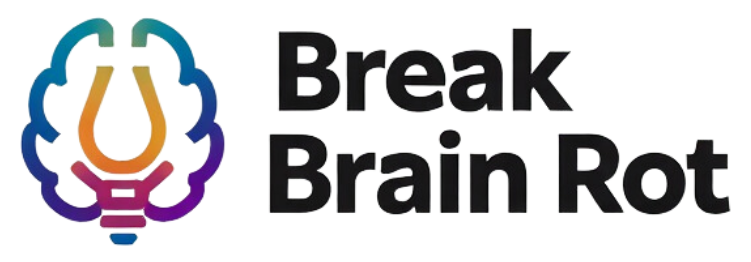Does this sound familiar? You pick up your phone for a quick scroll through the news or social media, only to find yourself submerged in a flood of negativity and bad news 30 minutes later. You feel overwhelmed, anxious, and exhausted. This habit, known as doomscrolling, has become all too common. It can take a toll on your mental health, drain your focus, and steal precious time that could be spent on more meaningful activities.
If you’ve been searching for ways to break this cycle, you’ve come to the right place. In this article, we’ll explore why doomscrolling happens, how it affects your well-being, and—most importantly—practical strategies to learn to stop doomscrolling and reclaim control over your attention and mental space. Let’s dive in!
Table of Contents
- What Is Doomscrolling and Why It Happens
- The Impact of Doomscrolling on Focus and Well-being
- Practical Strategies to Learn to Stop Doomscrolling
- How to Build Healthy Digital Habits
- Tools and Apps to Curb Doomscrolling
- FAQs
- Conclusion
What Is Doomscrolling and Why It Happens
Defining Doomscrolling
Doomscrolling refers to the habit of spending excessive time consuming negative or anxiety-inducing news and content online. It’s an activity that often starts with good intentions—staying informed—but quickly spirals into a time-sucking and emotionally draining experience. With a constant barrage of crises dominating news cycles, it’s easy to see why so many people fall into this trap.
The Psychology Behind Doomscrolling
The main psychological driver of doomscrolling is negativity bias—the tendency to focus on and prioritize negative information over positive. This is compounded by FOMO (fear of missing out), as we feel compelled to stay updated on every breaking story. Social media algorithms, which amplify sensational headlines, also play a major role in feeding the cycle. Learn more about negativity bias here.
The Impact of Doomscrolling on Focus and Well-being
Effects on Mental Health
Constantly consuming negative news can increase feelings of anxiety, stress, and helplessness. Over time, this can harm your emotional well-being, leaving you feeling drained and less capable of effectively managing challenges. Studies have shown that prolonged exposure to such content can even diminish your resilience to future stressors.
Reduced Focus and Productivity
Doomscrolling robs you of valuable time and mental energy. Instead of focusing on work, hobbies, or relationships, you’re locked into a repetitive cycle of content consumption, which can disrupt your ability to concentrate and complete meaningful tasks. Read more about its impact on productivity here.
Physical Impacts of Excessive Screen Time
Beyond mental health, doomscrolling can have physical consequences, too. Eye strain from prolonged phone use, disrupted sleep patterns from blue light exposure, and poor posture from hours of slouching over a screen are just a few examples of how this habit can affect your body.
Practical Strategies to Learn to Stop Doomscrolling
Awareness and Self-Assessment
The first step to change is recognizing the problem. Start tracking your screen time to identify patterns. Reflect on when and why you’re most likely to doomscroll—does it happen first thing in the morning or late at night? Keeping a journal can also help you become more aware of the triggers leading to this habit.
Setting Boundaries
Establish clear rules for when and how you consume media. For example, schedule specific times to check the news and avoid doing so outside those windows. Another effective strategy is creating “phone-free zones” or hours, such as during meals or before bedtime. These boundaries protect your mental space and give you room to focus on more productive activities.
Replace Doomscrolling with Positive Habits
Fill the time you’d normally spend doomscrolling with activities that benefit your mental and physical health. Consider reading a book, going for a walk, practicing yoga, or meditating. Mindfulness techniques can be particularly powerful—try dedicating just a few minutes each day to grounding exercises to bring yourself back to the present moment.
How to Build Healthy Digital Habits
Curate Your Content and Unfollow Negativity
Take control of your online experience by following accounts that promote positivity or align with your hobbies. Unfollow—or even mute—profiles and pages that consistently share distressing or unhelpful content. This creates a digital environment that uplifts rather than overwhelms you.
Create Tech-Free Zones and Times
Declare certain areas of your home, such as bedrooms, as tech-free zones. Or establish phone-free times, like during family dinners or the hour before bed. These small adjustments can have a significant impact on reducing screen addiction. You can find more tips at the National Sleep Foundation.
Use Digital Well-Being Tools and Settings
Leverage your devices’ built-in digital well-being tools, such as focus modes, screen time trackers, and app limiters. Enabling these features can make it easier to reduce usage without having to rely solely on willpower.
Tools and Apps to Curb Doomscrolling
Overview of Productivity Apps
Apps like Forest, StayFocusd, and Freedom can help you limit time spent on distracting websites and social media platforms. By blocking access during designated focus periods, these tools encourage healthier digital habits. Discover more productivity apps.
Mental Health Apps for Mindfulness
If stress or anxiety is driving your doomscrolling, mindfulness apps like Headspace or Calm can offer guided meditations and exercises to help you reset mentally.
Social Media Usage Analytics
Apps that track social media usage, such as RescueTime, provide insights into how you’re spending your digital hours. Use these analytics to set time limits and create goals for reducing screen time.
Frequently Asked Questions
What triggers doomscrolling, and how can I spot the signs?
Triggers often include stress, boredom, or a desire to stay informed. Track your habits and identify patterns to spot the signs.
Is doomscrolling harmful to mental health?
Yes, it can lead to increased stress, anxiety, and feelings of helplessness, negatively affecting your well-being.
Can apps really help stop doomscrolling?
Absolutely. Apps like Freedom and Headspace provide tools and prompts to help break the habit and build healthier habits.
Conclusion
Doomscrolling may seem like a harmless habit, but its effects on your mental health, focus, and productivity are anything but. By identifying the triggers, implementing boundaries, and forming healthier digital habits, you can learn to stop doomscrolling and reclaim your time and attention.
Start small—today, choose just one strategy from this article to try. Whether it’s setting a timer on your phone or curating your social feeds, each step brings you closer to a more balanced and focused life. The time to change is now!

